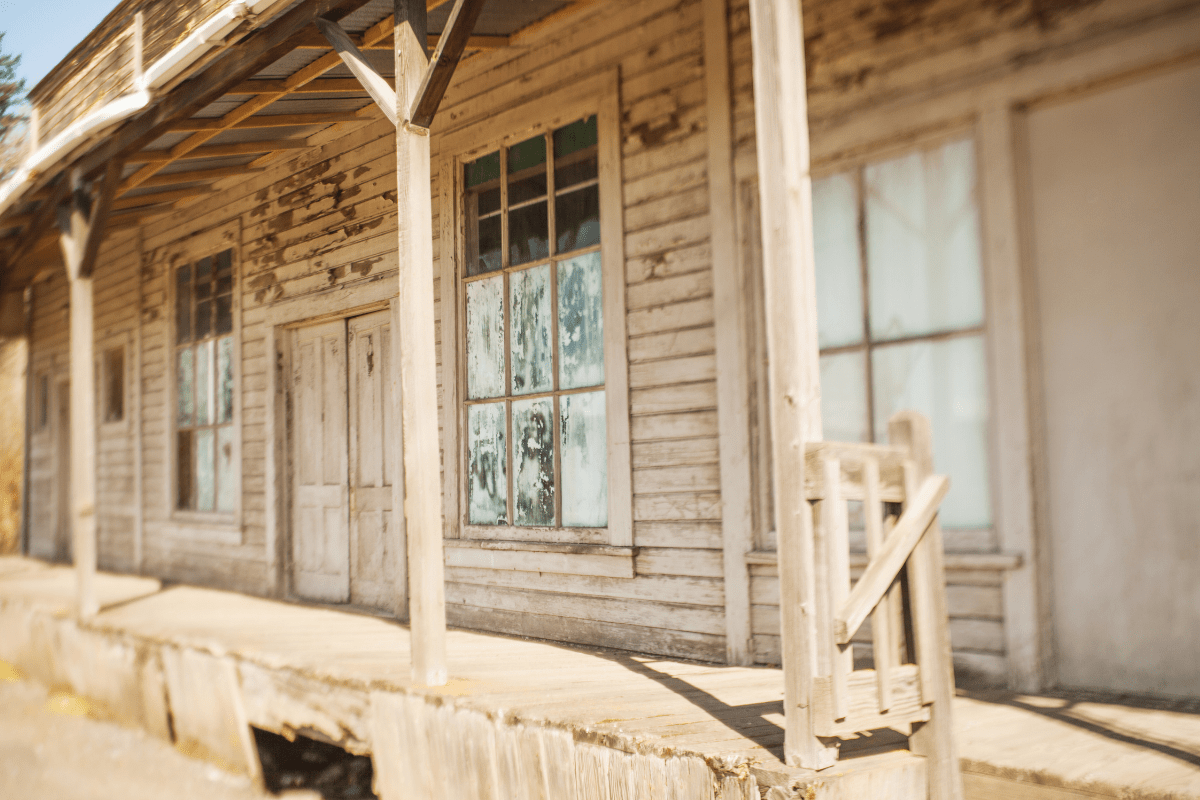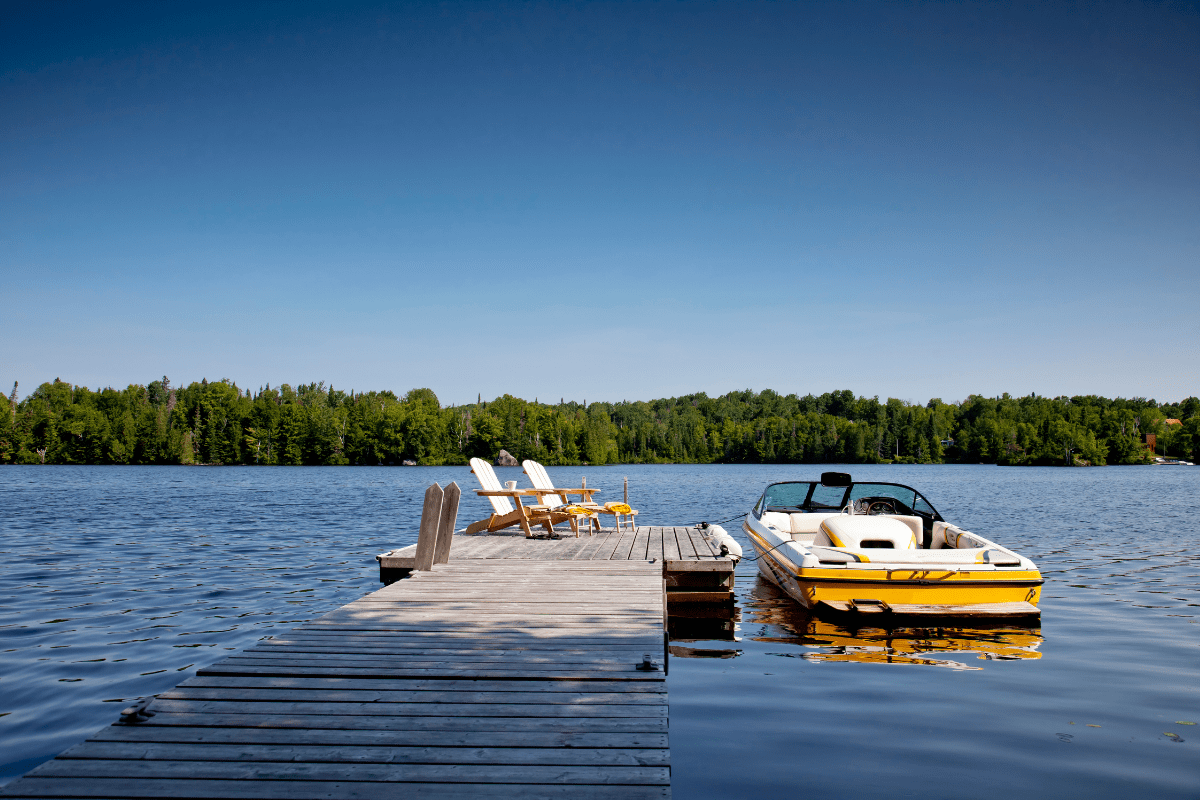The old wooden sign creaks in the desert wind, barely hanging on by one rusty nail. Welcome to Arizona's ghost towns, where nearly 300 abandoned settlements dot the landscape like forgotten dreams. These dusty time capsules contribute serious cash to Arizona's $29.7 billion tourism industry, proving that sometimes being dead is more profitable than being alive.
Why ghost towns are worth the desert detour
Let me paint you a picture: weathered buildings leaning at impossible angles, rusty mining equipment frozen mid-operation, and that eerie silence broken only by wind whistling through broken windows. Arizona's ghost towns extracted over $1 billion in copper, gold, and silver during their heyday. Today, they mine something different… tourist wallets.
But here's the thing. These aren't just Instagram backdrops for your cousin's engagement photos. Philip Varney, who literally wrote the book on Arizona ghost towns, explains that these places share two characteristics: the population tanked, and whatever kept people there originally doesn't exist anymore. Simple as that. Yet hundreds of thousands of visitors trek through the desert each year to glimpse these remnants of boom-and-bust capitalism.
The appeal goes deeper than nostalgia for a time when men were men and dental hygiene was optional. These towns offer authentic connections to the Old West, minus the dysentery and gunfights over water rights. Well, mostly minus the gunfights. Some towns stage those daily for your entertainment.
The ghost towns you can't miss (and one you literally can't visit)
Arizona's abandoned settlements range from completely commercialized tourist traps to genuinely spooky ruins where you'll question every horror movie decision you've ever criticized. Let's explore the spectrum.
Jerome: Where artists colonized a copper kingdom
Picture this: a town so precariously perched on Cleopatra Hill at 5,000 feet that buildings occasionally just… slide downhill. Jerome peaked at 15,000 residents in the 1920s when the United Verde Copper Company was extracting ridiculous amounts of ore. We're talking 33 million tons over 77 years, producing 3 million pounds of copper monthly at peak insanity.
The town survived four devastating fires between 1894 and 1898, which you'd think would be a sign to maybe relocate. Nope. They stayed put through labor strikes, including that charming 1917 incident where 60 union members got expelled at gunpoint. Then came the 1938 mining blast that literally moved the town jail 225 feet downhill. It's still sitting there, crooked as a politician's promise, because moving it back would ruin the whole vibe.
When Phelps Dodge closed the mines in 1953, Jerome's population crashed to 50 diehards. Today? About 450 residents share their town with 90,000 annual visitors who browse art galleries, peer into mine shafts, and complain about the $5 daily parking fees that locals enforce with vindictive enthusiasm.
Visit the State Historic Park at Douglas Mansion for $10, where panoramic views make you understand why people thought building here was totally reasonable. The Gold King Mine displays 180 vintage vehicles and original 1890s equipment, because nothing says "ghost town" like a rusted-out Model T. Just remember: those narrow, winding streets sit atop 88 miles of underground tunnels. Sleep tight!
Goldfield: Disney does the Wild West
If Jerome is authentic decay, Goldfield is its plastic surgery cousin. The original 1893 settlement boomed to 4,000 residents after gold discoveries worth $3 million in 1890s money. When ore grades dropped in 1897, everyone vanished faster than free samples at Costco.
The modern Goldfield, reconstructed in 1984 at 4650 N Mammoth Mine Road in Apache Junction, embraces its tourist trap destiny with zero shame. Located beneath the Superstition Mountains, it capitalizes on the Lost Dutchman legend. Jacob Waltz, a German immigrant nicknamed "the Dutchman" because apparently nobody understood how Netherlands geography works, supposedly found a rich gold vein in the 1870s. He died in 1891 with high-grade ore under his deathbed, taking the mine's location to his grave like the ultimate passive-aggressive prospector.
Here's what your money gets you at Goldfield Ghost Town:
- Narrow gauge railroad ride: $12
- Underground mine tour: $12
- Museum with Lost Dutchman exhibits: $9
- Zipline over absolutely nothing historic: $12
- Watching gunfight shows: Free
- Realizing you've spent $45: Priceless
The gunfights happen hourly from noon to 4 PM on weekends, because even fake outlaws need work-life balance. Merchants close at 5 PM, but the saloon stays open until 9 PM, priorities being what they are.
Tombstone: The town too tough to die (or stop charging admission)
With 450,000 annual visitors, Tombstone represents peak ghost town commercialization. This is where subtlety went to die, presumably in a gunfight at high noon. Three daily O.K. Corral reenactments ensure you'll witness more staged violence than a professional wrestling convention.
The town offers multiple attractions, ghost tours for every paranoia level, and enough gift shops to outfit an entire elementary school's Wild West Day. It's the Disneyland of death, minus the mouse ears but plus the very real Boot Hill Cemetery where people actually died of lead poisoning, the bullet kind.
Ruby: The one that got away
Here's where things get sad. Ruby permanently closed in June 2024 after 33 years of public access. The 80-year-old owners threw in the towel, citing overwhelming maintenance burdens. This remarkably preserved border town had 25 intact buildings and a history dark enough to make Stephen King jealous.
Between 1920 and 1922, three double murders triggered Arizona's largest manhunt, involving 700 volunteers and the state's first aerial search operation. The kind of true crime podcast material that would've generated serious tourist revenue. But maintaining ghost towns is like maintaining actual ghosts… exhausting and ultimately futile.
When to visit (hint: not in July unless you enjoy melting)
The sweet spot for ghost town exploration runs October through April. This isn't me being dramatic; it's basic survival. Desert elevations see summer highs of 100-120°F, which is less "authentic frontier experience" and more "medically inadvisable life choice."
Even mountain towns like Jerome hit 85-100°F in summer, though at least you can pretend the altitude makes it bearable. Winter brings pleasant 65-75°F days to desert locations but can plummet to 25°F at night. Pack layers unless you want to experience authentic frontier hypothermia.
Temperature swings of 40+ degrees between day and night are normal, because the desert enjoys messing with tourists. Also avoid mid-July through mid-August unless you enjoy flash floods, which can appear even during sunny weather because Arizona weather has commitment issues.
The lesser-known gems worth finding
Not every ghost town needs gift shops and gunfights. Some offer genuine solitude and authenticity, assuming you can find them.
Chloride, 23 miles northwest of Kingman, maintains about 300 residents who seem genuinely confused by visitors. The main attraction? Roy Purcell's psychedelic 1966 murals painted on canyon boulders, because nothing says "Old West" like acid trip artwork. High Desert Drifters perform gunfight reenactments on first and third Saturdays, keeping it exclusive like a secret supper club with six-shooters.
Swansea, managed by the BLM and located 25 miles from Parker, offers extensive adobe ruins for the truly dedicated. No gift shop. No reenactments. No cell service. Just you, the desert, and the creeping realization that nobody knows where you are.
Fairbank, within the San Pedro Riparian National Conservation Area, provides free access to restored 1880s buildings with interpretive programs Friday through Sunday. It's educational, well-preserved, and completely free, which probably explains why it's not more popular.
How to not die while exploring ghost towns
I wish this section was unnecessary, but Arizona has 100,000 abandoned mine openings with only 19,000 mapped. Since tracking began, at least 35 people have died and 22 have been injured in these mines. The Maricopa County Sheriff's Mountain Rescue Unit pulls someone out of a mine shaft every 12 to 16 months, usually in pieces.
The dangers read like a horror movie checklist. Vertical shafts drop hundreds of feet into darkness. Toxic gases accumulate in underground passages. Old explosives can detonate from vibration… like footsteps. Support timbers that look solid will collapse under a chihuahua's weight after decades of desert weathering.
Then there's the wildlife. Abandoned mines host:
- Venomous snakes seeking shade
- Africanized bees building anger management issues
- Mountain lions in higher elevations
- Bears who don't care about your Instagram
Flash floods during monsoon season can generate six inches of fast-moving water, enough to knock down adults and sweep away rental cars. These floods can occur miles from the actual storm, appearing under blue skies like nature's ultimate prank.
Cell coverage? Good luck. AT&T offers the best coverage at 65% statewide, which means 35% of the time you're on your own. Pack a satellite communicator, GPS with paper backup, and minimum one gallon of water per person per day in summer. This isn't paranoia; it's Tuesday in Arizona.
The legal stuff nobody reads but really should
Many ghost towns sit on private property, and Arizona doesn't mess around with trespassing. First-degree trespassing in residential structures or fenced areas is a Class 6 felony. Third-degree trespassing on posted property is a Class 3 misdemeanor. Penalties range from $2,500 fines to actual jail time, which would really ruin your vacation photos.
On BLM-managed lands, you can camp for 14 days within any 28-day period, then must relocate at least 25 miles away. Rockhounding is allowed up to 25 pounds daily for personal use, but taking artifacts or historic items violates federal law. That rusty horseshoe isn't a souvenir; it's evidence in your future prosecution.
Drone pilots need FAA Part 107 licenses for commercial use and must stay 500 feet horizontal and 250 feet vertical from critical facilities. Arizona state law preempts local drone regulations, but you still need permission to fly over private property. That aerial shot of Vulture City might cost more than admission.
Preservation versus profit
The recent closure of Ruby highlights a harsh reality: maintaining ghost towns is expensive, thankless work. Organizations like the Arizona Preservation Foundation and State Historic Preservation Office fight natural deterioration and vandalism with limited budgets. Grants from the National Trust range from $2,500 to $15,000, which barely covers a new roof, let alone ongoing maintenance.
Yet tourist interest keeps growing. People want "experience-focused" visits including paranormal investigations, photography workshops, and increasingly elaborate reenactments. Some sites embrace this commercialization; others resist becoming theme parks.
The Arizona Heritage Alliance and local groups like the Old Pearce Preservation Association work to balance access with preservation. Recent purchases like Courtland by the Arizona Land Project offer hope, providing docent-led tours that educate while protecting the sites.
Technology might offer solutions. Virtual reality experiences and interactive apps could provide access to fragile or dangerous sites. Imagine exploring Ruby's 25 buildings from your couch, minus the rattlesnakes and tetanus risk.
Planning your ghost town adventure
Start with these essential resources before heading into the desert:
- Arizona Office of Tourism for general information
- BLM Arizona for public land access
- Arizona State Parks for specific sites
- Local historical societies for guided tours
Photography enthusiasts should target golden hour… sunrise for mountain towns, sunset for desert sites. Remote locations offer minimal light pollution for night photography, assuming you're comfortable being alone in a ghost town after dark. I'm not judging your life choices, just questioning them.
Budget accordingly. Entry fees range from free at Fairbank to $15 at Vulture City. Goldfield's individual attractions can total $45+ for a family, not counting the inevitable gift shop damage. Jerome's $5 daily parking adds up if you're actually exploring rather than speed-touring.
Pack more water than you think you need. Bring snacks that won't melt. Wear closed-toe shoes unless you enjoy cactus acupuncture. Download offline maps because GPS signals fear commitment in the desert. Tell someone where you're going, even if they think you're crazy for wanting to visit abandoned towns in 110-degree heat.
The bottom line on Arizona's ghost towns
These abandoned settlements offer more than Instagram opportunities and fake gunfights. They're tangible connections to Arizona's boom-and-bust past, reminders that today's thriving city could be tomorrow's tourist attraction. Tony Hillerman called them "a sort of touching-place with the past," which sounds poetic until you're actually touching something in an abandoned building and immediately need a tetanus shot.
Whether you choose commercialized Tombstone or remote Swansea, respect these sites. They represent real lives, dreams, and failures. The miners who died in Vulture City's Glory Hole tragedy weren't thinking about future tourism. The families fleeing Ruby after the murders weren't establishing a true crime attraction.
Visit responsibly. Pack out your trash. Don't take "souvenirs." Stay out of mine shafts no matter how stable they look. And maybe buy something from the gift shop if there is one… these places need all the help they can get to survive another generation.
Arizona's ghost towns won't exist forever. Natural decay, vandalism, and maintenance costs claim more sites each year. See them while you can, but see them with respect. Because someday, we might all be ghost towns, hoping someone remembers why we mattered.





